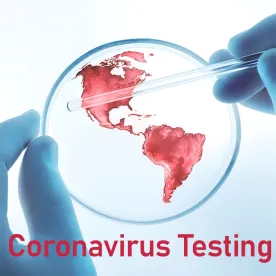Employers continuing to operate as essential businesses under the various state closure orders, or that are now beginning to plan to reopen or return workers as restrictions are scheduled to ease or phase out in various jurisdictions, are increasingly focused on how best to screen employees for COVID-19 as they report to work. Many jurisdictions are recommending (and some are requiring) employee temperature screenings and other measures. With COVID-19 testing becoming more accessible and a realistic option for employers in parts of the country, some employers are exploring whether they can make COVID-19 testing a component of their employee screening and mitigation plans. On April 23, 2020, the U.S. Equal Employment Opportunity Commission (EEOC) provided a helpful update to its COVID-19 Technical Assistance publication, affirming that employers may lawfully administer COVID-19 testing to employees.
In short, the update to the EEOC guidance makes clear that employers may administer COVID-19 tests to employees as part of a screening process before allowing employees into the workplace during the current pandemic without violating the Americans with Disabilities Act (ADA). Thus, employers may make testing available on a voluntary basis or they may mandate testing as a condition of entering the workplace. In addition to acknowledging that testing is permissible, the EEOC offers the following advice:
-
“Consistent with the ADA standard, employers should ensure that the tests are accurate and reliable. For example, employers may review guidance from the U.S. Food and Drug Administration about what may or may not be considered safe and accurate testing, as well as guidance from CDC or other public health authorities, and check for updates. Employers may wish to consider the incidence of false-positives or false-negatives associated with a particular test. Finally, note that accurate testing only reveals if the virus is currently present; a negative test does not mean the employee will not acquire the virus later.”
-
“Based on guidance from medical and public health authorities, employers should still require – to the greatest extent possible – that employees observe infection control practices (such as social distancing, regular handwashing, and other measures) in the workplace to prevent transmission of COVID-19.”
This updated guidance should put to rest employer anxiety over whether the ADA permits COVID-19 testing in the workplace. It is not yet clear, however, whether the EEOC will make a distinction for antibody tests, which may indicate that the employee has previously been infected with the SARS-CoV-2 virus and, as a result, may be immune from its effects in the future. On the one hand, the current guidance appears focused on FDA-approved tests designed to detect an active COVID-19 infection without any mention of antibody testing. On the other hand, there is a national discussion on the potential use of antibody testing as a screening tool for allowing employees back in the workplace, and such tests might address the concern highlighted by the EEOC that COVID-19 tests for the presence of the virus cannot indicate whether an employee may acquire the virus later. For now, employers should evaluate the use of antibody testing with greater caution.
Employers that choose to make COVID-19 testing part of their screening plans also should be prepared to discuss employee objections to testing that are based on disabilities or religious beliefs and consider accommodations that may be required under the ADA or Title VII of the Civil Rights Act or their state law equivalents. In addition, employers should continue to monitor for new guidance, recommendations, and requirements related to testing that may be forthcoming in state and local government orders pertaining to the resumption of business operations.




 />i
/>i

